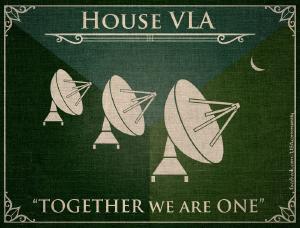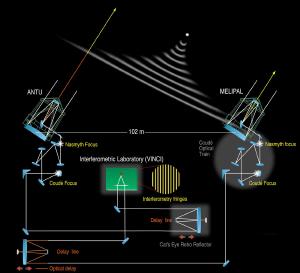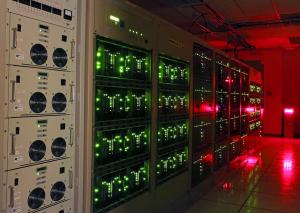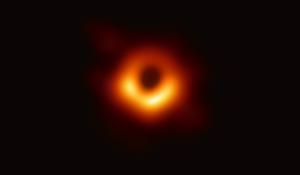Blog
Together We Are One
21 February 2020
 LISA Community
LISA CommunityWhen astronomers talk about an optical telescope, they often mention the size of its mirror. That’s because the larger your mirror, the sharper your view of the heavens can be. It’s known as resolving power, and it is due to a property of light known as diffraction. When light passes through an opening, such as the opening of the telescope, it will tend to spread out or diffract. The smaller the opening, the more the light spreads making your image more blurry. This is why larger telescopes can capture a sharper image than smaller ones.
Diffraction doesn’t just depend on the size of your telescope, it also depends on the wavelength of light you observe. The longer the wavelength, the more light diffracts for a given opening size. The wavelength of visible light is very small, less than a millionth of a meter in length. But radio light has a wavelength that is a thousand times longer. If you want to capture images as sharp as those of optical telescopes, you need a radio telescope that is a thousand times larger than an optical one. Fortunately, we can build radio telescopes this large thanks to a technique known as interferometry.
 FAST
FASTTo build a high-resolution radio telescope, you can’t simply build a huge radio dish. You would need a dish more than 10 kilometers across. Even the largest radio dish, China’s FAST telescope, is only 500 meters across. So instead of building a single large dish, you build dozens or hundreds of smaller dishes that can work together. It is a bit like using only parts of a great big mirror instead of the whole thing. If you did this with an optical telescope your image wouldn’t be as bright, but it would be almost as sharp.
 ESO
ESOBut it’s not as simple as building lots of little antenna dishes. With a single telescope, the light from a distant object enters the telescope and is focused by the mirror or lens onto a detector. The light that left the object at the same time reaches the detector at the same time, so your image is in sync. When you have an array of radio dishes, each with their own detector, the light from your object will reach some antenna detectors sooner than others. If you just combined all your data you would have a jumbled mess. This is where interferometry comes in.
Each antenna in your array observes the same object, and as they do they each mark the time of the observation very precisely. This way you have dozens or hundreds of streams of data, each with unique timestamps. From the timestamps, you can put all the data back in sync. If you know that dish B gets a single 2 microseconds after dish A, you know signal B has to be shifted forward 2 microseconds to be in sync.
 ALMA (ESO/NAOJ/NRAO), S. Argandoña.
ALMA (ESO/NAOJ/NRAO), S. Argandoña.The math for this gets really complicated. In order for interferometry to work, you have to know the time difference between each pair of antenna dishes. For 5 dishes that’s 15 pairs. But the VLA has 26 active dishes or 325 pairs. ALMA has 66 dishes, which makes for 2,145 pairs. Not only that, as the Earth rotates the direction of your object shifts relative to the antenna dishes, which means the time between the signals changes as you make observations. You have to keep track of all of it in order to correlate the signals. This is done with a specialized supercomputer known as a correlator. It is specifically designed to do this one computation. It is the correlator that lets dozens of antenna dishes act as a single telescope.
It has taken decades to refine and improve radio interferometry, but it has become a common tool for radio astronomy. From the inauguration of the VLA in 1980 to the first light of ALMA in 2013, interferometry has given us extraordinarily high-resolution images. The technique is now so powerful that it can be used to connect telescopes all over the world.
 EHT Collaboration
EHT CollaborationIn 2009 radio observatories across the world agreed to work together on an ambitious project. They used interferometry to combine their telescopes to create a virtual telescope as large as a planet. It is known as the Event Horizon Telescope, and in 2019 it gave us our first image of a black hole.
With teamwork and interferometry, we can now study one of the most mysterious and extreme objects in the universe.